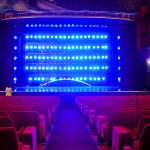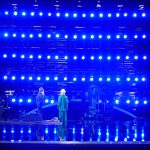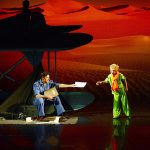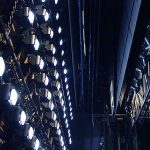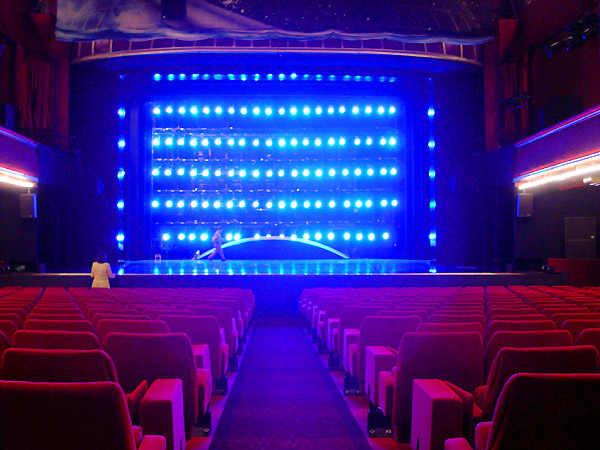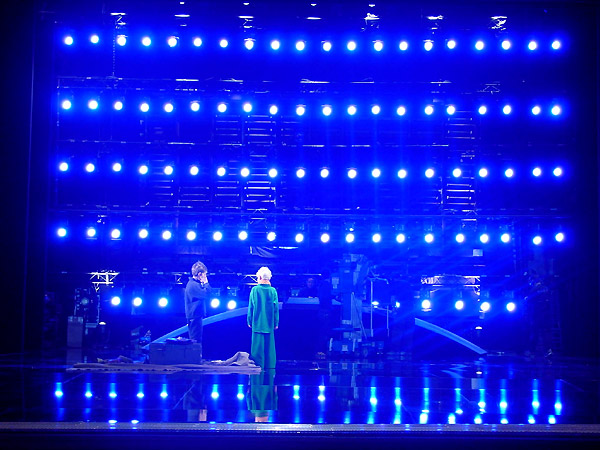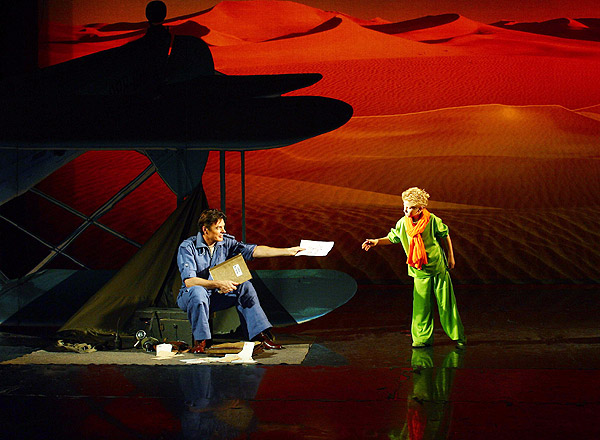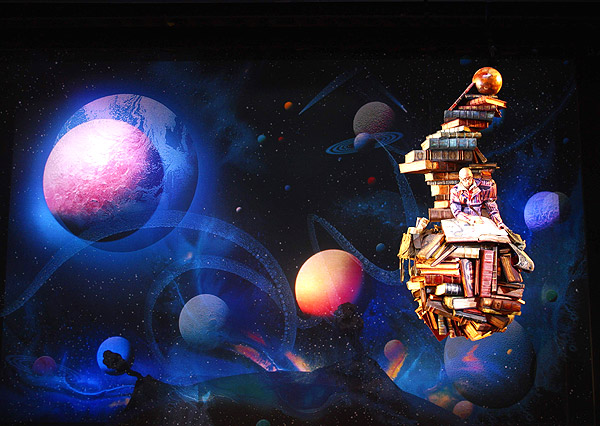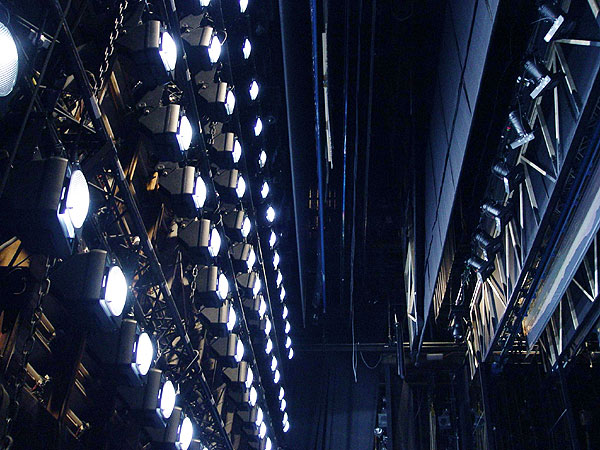“Le Petit Prince” has come back to life in the Casino de Paris Theatre. Antoine de Saint-Exupéry’s grand novel is now a journey through worlds of enchantment and colourful characters, a metaphor for man’s vices and virtues.
The show began on October 1, 2002 and will run presumably through the end of June 2003.
Produced by Victor Bosch/NODO Productions, the show features music by Riccardo Cocciante (with lyrics by Elisabeth Anais) and directed by Jean-Louis Martinoty.
Jean Kalman served as Lighting Designer, a lighting artist whose work has appeared onstage at the National Opera of Paris, the Musical Theatre, the Royal National Theatre of London and numerous other theatres, festivals, and concerts the world over for internationally acclaimed artists.
In “Le Petit Prince”, Kalman demonstrates how recently the possibilities of theatre lighting have expanded beyond all expectations. This is primarily due to the advent of “intelligent” projector technology and the use of increasingly versatile and professional products. Light is no longer a passive element to accompany a presentation, but must constantly interact with the scene, giving it life and form. Up front and centre stage for 100 CP Color 400 Clay Paky’s aligned in 5 rows of 20 each on the stage’s back wall. The colours were retro-projected on vast semi-transparent printed screens, which serve as the framework for different scenes.
Jean Kalman performed a number of trials in order to decide which colour changer was most suited to our needs. Clay Paky’s CP Colors proved to be the most versatile and complete: the CMY color-mixing system allows to create any colour combination imaginable with crisp and flawless uniformity of colour, even at wide angles and close range. What’s more, they operate in total silence, not a detail to be overlooked in a theatrical setting, especially with 100 fixtures.
Assistant LD Yves Caizergues confirms this: “Their versatility allowed me to program and operate all the CP Color 400’s as if they were a single element. The background appeared coloured because we “painted” it with light. The real advantage is that we were able to create as many coloured backgrounds as needed without the slightest modification of the set. I enjoyed being able to control the 0 to 100% dimmer from the lighting desk. This allowed me to vary the intensity of light and colour variations simultaneously.
And the result? While watching the show, you get the impression that nothing is impossible for Jean and Yves: a languid desert sunset surrenders to the night. Dawn breaks through and the desert becomes a meadow, only to be transformed into an ice slide to recreate the passage of time and seasons…a variety of settings using light as a creative force in each scene.
“Le Petit Prince”, continues Yves, “is a show that incorporates several powerful metaphoricall elements as a backdrop for the actors: what is unique is that we were able to achieve this by using elements that are purely theatrical, such as stage design and lighting. The lighting system was supplied by Roland Morvan’s Cameleon company and consisted of several projectors for front and side lighting.
Yves continues by explaining how the projection screens function and were created: “They consist of 5 large 8.50m x 12.00m transparent screens, some of which are partially coloured and overprinted with photographs. These screens descend parallel to each other on different levels, at a distance varying from 1 to 5 metres from the wall of 100 CP Color 400’s. They absorb the retro-projected colour, blend it with the surrounding light, throwing back the exceptional “paintings of light” described above.
“Le Petit Prince” is an exercise in the intelligent use of light and colour, skilfully blended with all the typical elements of theatre. The spectator is literally immersed in a whirlpool of unforgettable visual emotions, as unforgettable as the performances of the main players such as Jeff, the good little prince who continues to thrill audiences in the casino’s theatre.
Technical sheet:
Producer: Victor Bosch/NODO Productions
Music: Riccardo Cocciante (lyrics by Elisabeth Anais)
Director: Jean-Louis Martinoty
Set Designer: Hans Shavernoch
Costumes: Jean-Chartes de Castelbajac
LD : Jean Kalman
LD Assistant: Yves Caizergues
Sound Engineer: Manu Guiot
Lighting and sound service: Cameleon
